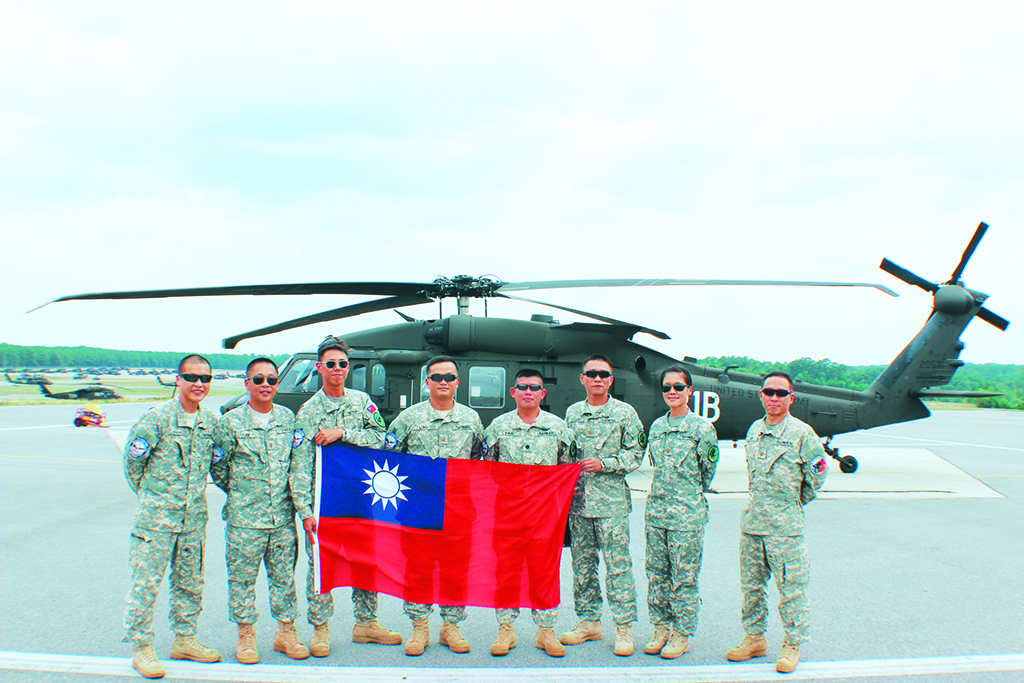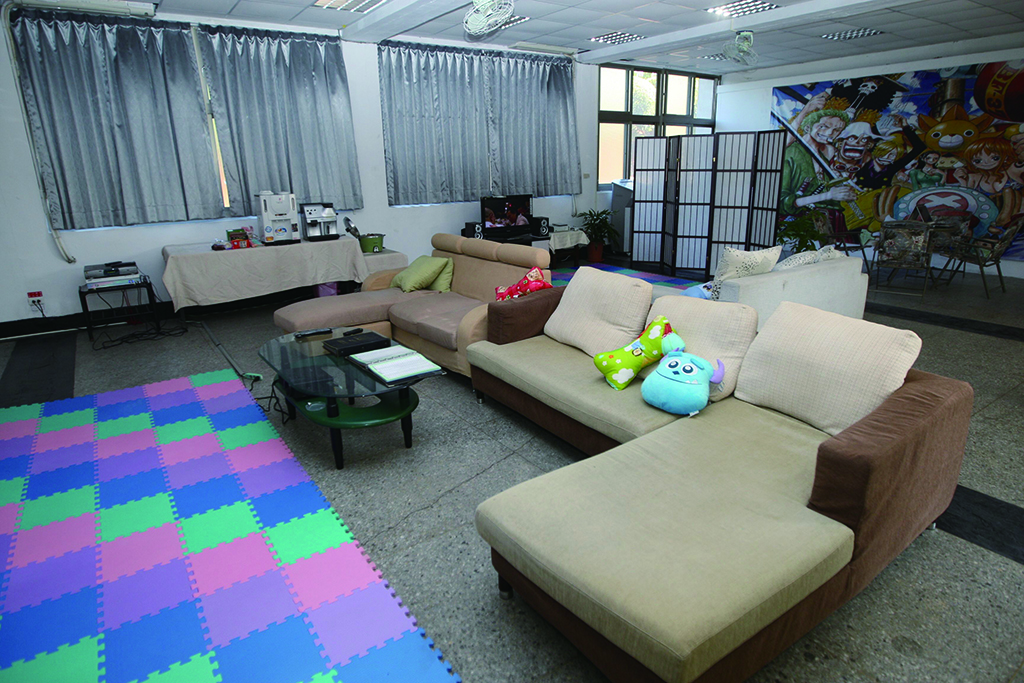- Minister's Foreword
- Introduction
- Part 1. Strategic Environment
- Part 2. National Defense Policy
- Chapter 3. National Defense Policy Plans
- Chapter 4. National Defense Policy Implementation
- Section 1. Enhance Force Buildup Efforts
- Section 2. Devise Well-planned Transformation of Military Service
- Section 3. Reform to National Defense Legal System
- Section 4. Safeguard Military Human Rights
- Section 5. Expand Military Exchanges
- Section 6. Enhance Crisis Response
- Section 7. Improve Care for Service Members
- Section 8. Promote Gender Equality
- Part 3. National Defense Capabilities
- Chapter 5. National Defense Force
- Section 1. Introducing the National Defense Organization
- Section 2. Improving Joint Operations Effectiveness
- Section 3. Maintaining Continuous Operational and Training Readiness
- Section 4. Consolidating Information and Electronic Warfare Capabilities
- Section 5. Refining Logistics Support
- Section 6. Consolidating Reserve Force
- Section 7. Forging Intangible Combat Capabilities
- Chapter 6. National Defense Resources
- Chapter 5. National Defense Force
- Part 4. All-out Defense
- Appendixes
By referring to security threats, our military strategic concepts, future joint operational requirements, and arms development trends in advanced countries, we have been reviewing our technological levels and financial capacities to draw up 3 armament strategies of acquisition, technology, and logistics to lead our efforts in keeping a solid armament readiness. In addition to acquiring suitable arms and improving our self-reliant defense capabilities, we have been fine-tuning our full life cycle armament management mechanism in order to ensure proper support for our military operations.
I. Weapons Acquisition Results
( I ) Military Investment Projects
The MND has made plans to established its short-, mid-, and long-term joint operational capabilities. By following acquisition procedures, we have been trying to invest limited national defense resources in establishing the most formidable combat capabilities. A total of 53 military investment projects for FY 2016 have been planned. We have reviewed upcoming available financial resources and our operational requirement priorities, and planned to proceed with those projects in FY 2016.
( II ) International Exchange in the Field of Armament
In order to achieve our goal of establishing self-reliant defense and consecutively build our weapons research and development capabilities, we have arranged armament exchange platforms with advanced nations by adopting equitable, mutually beneficial and resource sharing principles to expand our armament exchange circles, create collaborative R&D opportunities and improve our acquisition project management. For instance, the US-Taiwan Defense Industry Conference was held in Williamsburg, Virginia in September 2014. The US participants recognized our determination to strengthen cooperation with US defense industries and to establish self-defense capabilities, and expressed their support willingly. Such support has greatly strengthened our mutual relations and trust.
( III ) Production and Manufacturing
Complying with the Article 22 of the National Defense Act and the guidelines of identifying core technologies, integrating all capabilities, forming strategic alliances and adopting work specialization, to combine the core technologies of our production factories with the vast capabilities in the industrial sector, we have employed means of co-production, technology transfers through off-set and outsourcing production to expand opportunities for companies in private sector to join in the pool in manufacturing military items, and establish critical manufacturing capabilities for national defense so as to facilitate our acquisition and follow-on maintenance or our military hardware. From January 2014 to August 2015, through these means we have completed over 1,000 production projects, including Cloud Leopard 8-wheeled armored vehicles, and various weapon systems, equipment, guns, cannons and munitions for a total value exceeding NT$ 10.0 billion.
( IV ) Acquisition of Weapon Systems and Equipment
1.According to the principles of prioritizing indigenous production before foreign acquisitions, we have been applying advanced management techniques and well-rounded acquisition management systems to establish a comprehensive management system for every level. Furthermore, our acquisition processes have been subject to internal project supervision and management activities in order to effectively achieve their desired objectives. It is hoped that through expending the most adequate costs with lowest risks and shortest schedules, we may reap the maximum benefits possible.
2.We have been actively promoting indigenous weapons and equipment manufacturing and R&D capabilities. In 2014, the MND assisted the Chung-Shan Institute of Science and Technology (CSIST) in establishing the Panlong Project and another 5 R&D projects. Completion of these projects will improve our defense technology R&D capabilities and help achieve our goals of self-reliant defense capabilities.
3.For the defensive weapons and equipment that cannot be manufactured indigenously, we shall consider foreign acquisition. US FMS programs to us reached US$ 18.3 billion since President Ma took office 7 years ago, with acquisition programs, such as F-16 A/B retrofit, AH-64E attack helicopter, UH-60M utility helicopter, P-3C fixed-wing anti-submarine warfare (ASW) aircraft and PAC-3 missile systems. These acquisitions have effectively improved joint operational capabilities of the ROC Armed Forces.
II. Results of Technological Development
Following innovative / asymmetric concepts and force buildup guidelines of being led by technology, achieving information and electronic superiorities, conducting joint interdictions against enemy, and exerting homeland defense, the MND has envisioned short-, mid- and long-term national defense technology development trends that satisfy joint operational requirements to carve out its motivations to acquire key technologies which are under international export restrictions for the time being in order to fulfill its mission of self-reliant defense and ultimately to support our force buildup objectives. In order to make proper use of our national defense technology developments, we are planning to release mature and quality national defense technologies to industries to improve our industrial base and promote economic development of our country.
( I ) National Defense Technology Developments
1.The top priority of defense technology development is to integrate 3 phases: identifying joint operational requirements, conducting national defense technology research, and pursuing weapon systems development. Abiding by stringent technology foresight procedures, we have been formulating short-, mid- and long-term defense technology development plans to ensure that our defense technology developments are insightful, integrated and continued in terms of policy implementation, and all the requirements, technology research, and weapon systems development are consistent and coherent.
2.For basic and applied technology studies, we have been requesting public and private universities to carry out relevant programs so as to encourage academic and research bodies to contribute to defense technology development. From 2014 to 2015, there are 182 research programs underway, such as low-noise highly efficient rotor blades for submersibles and UAV.
3.Concerning key technologies that are difficult to acquire, we have been establishing specific programs through defense technology research studies. There are 72 key technology R&D programs underway across 7 categories, including stealth and nano-technologies, helping to lay a sound foundation for key national defense technologies.
( II ) Developing Dual-use Technologies
We have been releasing profitable non-sensitive national defense technologies to the industrial sector. From 2014 to August 2015, we have completed 234 investment projects for dual-use technology transfer, generating revenues of about NT$ 14.6 billion.
III. Results of Integrated Logistics
Our integrated logistics support is focused on 3 aspects: full life-cycle system management, supply chain management, and industrial strategic alliance. In addition, we have been giving integrated logistics education and training to relevant staff in charge for them to recognize that when requirement emerges is the time to kick off integrated logistics support. Therefore, they will be aware that we have to make the best of limited national defense resources so as to improve overall effectiveness of military investments.
( I ) Full Life-cycle System Management
Currently, by adopting the weapons acquisition and integrated logistics support system to improve the readiness rates of our military hardware, we have been keeping a full life-cycle management, starting from planning, R&D, production, fielding, maintenance, to phasing out, for our 39 major military investment programs, including the Xunchi Program (8-wheeled armored vehicles program).


1.The ROC Armed Forces have established armament exchange platforms wi t h advanced nations by adopting equitable, mutually beneficial and resource sharing principles to expand our armament exchange circles, create collaborative R&D opportunities and improve our acquisition project management. The picture shows a P-3C anti-submarine warfare aircraft of the ROC Armed Forces .
2.Security threats, our military strategic concepts , future joint operational requirements and arms development trends in advanced countries are taken as guidance to lead our efforts in keeping a solid armament readiness. The picture shows the Cloud Leopard Infantry Fighting Vehicle, indigenously developed by the ROC Armed Forces.
3.According to the principles of prioritizing indigenous production before foreign acquisitions, we have been effectively achieving our project objectives to exercise full control of weapon system acquisition schedules to satisfy our operational requirements. The picture shows newly commissioned utility helicopter

( II ) Supply Chain Management
In order to consolidate national defense technology R&D, production and maintenance capabilities, establish outsourcing partners, shorten materiel acquisit ion schedules, and reduce the impact caused by diminishing manufacturing sources (DMS), we have been vigorously promoting cooperation with academic and industrial circles in our supply chain so as to enhance research and production capabilities of the partners involved, shorten R&D and production cycle, and improve product quality. In the past 2 years, the MND has outsourced 579 cases to partners. For FY 2015, the total value of the outsourced cases is beyond NT$ 10.1 billion.
( III ) Strategic Alliance with Industries
By establishing a strategic commercial maintenance model for our military hardware, we have devised a government owned / contractor operated (GOCO) means for our units to build up strategic alliances with industries for the purpose of outsourcing. Involved contractors are thus encouraged to commit long-term investments and provide stable and reliable support. By so doing, in compliance with contractual requirements and our performance indicators, we have generated budget savings of up to NT$ 2.6 billion.
IV. Procurement Management Performance
ROC Armed Forces procurement is one of the key means employed for supporting force buildup and is an integral part of the national defense policy implementation. All procurements must comply with the regulations stipulated in the Government Procurement Act and make overall considerations to the quality, time and costs before proceeding with the relevant processes. Auditing, supervision and professional training have been employed to enhance procurement quality, efficiency and professional competencies of our personnel.
( I ) Current Status of Military Procurements
From 2014 to August 2015, the ROC Armed Forces concluded 10,088 procurement cases at a value of NT$ 189,233.17million. Among them, 9,970 (or 98.83%) cases were made from domestic procurements at a value of NT$ 161,278.45 million, and only 118 (or 1.17%) cases were made from overseas procurements at a value of NT$ 27,954.71 million. These numbers have shown a gradual maturation of domestic manufacturers supported by the ROC Armed Forces.
( II ) Implementation of Procurement Audits
From 2014 to 2015, 373 procurement cases at a value of NT$ 24.9 billion were designated for auditing by the Public Construction Commission of the Executive Yuan. By August 2015, 380 cases were submitted for auditing at a value of over NT$ 15.8 billion, and no major violations have been found.
( III ) Training Status of Procurement Personnel
From 2014 to August 2015, we have held 28 courses (sessions) for government procurement personnel, including basic and advanced qualification training courses, actual procurement case study seminars, seminar on procurement supervision for high ranking personnel and specialized training courses for FMS and overseas procurements. A total of 1,839 individuals underwent these training courses.


1.When renovated, the specific military installation will be rezoned according to its functional suitability in order to prevent disrupting its mission, training, and routine activities from disrupting one another so as to improve living quality of service members. The picture shows public artworks in the new Bo'ai campus of the MND
2.By renovating living facilities for service members, we may attract more distinguished young adults to serve. Aging buildings have been undergoing renovations without dismantling their original structure, and it is hoped that by so doing we may improve the military personnel's willingness to remain in the service.
V. Construction and Asset Management Performance
In response to the Volunteer Military policy, governments' major policies, and planned national land usage allocation, the MND has established a stringent and comprehensive construction and camp asset management system to optimize key measures for the volunteer force, such as troop care and living quality improvement while implementing asset management to enhance performance of our policy implementation.
( I ) Renovating Aging Camps and Living Quarters to Improve Quality of Living
1.Renovating aging camps: The Executive Yuan has provided an additional budget of NT$ 2.2 billion in 2015 in order to rebuild and renovate aging camps and purchase necessary furnishings to ensure the serviceability of camp amenities. In addition, renovated camps are designed with the concept of keeping adequate levels of independence and privacy in order to achieve overall improvements to personnel living environments.
2.Construction of new living quarters: 400 units of living quarters have been constructed in Taipei, Taichung, and Kaohsiung so that service members will be able to take care of their families living nearby. For existing living quarters, we have been doing renovations on the principles of focused repair, overhaul, and lifespan extension to gradually restore aging accommodations to improve the living environment of military families.
( II ) Continuing Release of Military Properties and Vitalizing National Land Utilization
1.In response to our force restructuring, the MND has been upholding the principles of merging smaller camps with larger ones, joint basing of the Army, Navy and Air Force, and relocating camps to suburban areas to continue its releasing of military properties without affecting our defense security and combat readiness.
2.Following important requirements of the government 's policy implementation, the MND has been reviewing high value and disposable military properties, and incorporating their revitalization through the ROC Armed Forces Camp and Facilities Rebuilding Fund so as to improve land use effectiveness. Revenues generated from the disposal will be returned to the fund to support renovation of aging military properties.
3.After considering our overall national economy and the need to promote local construction and development, the MND has been reviewing disposable military properties comprehensively since 2008 in accordance with Regulations of Reviewing Movement and Release of Military Properties, and transfer those properties to the National Property Administration or the other public agencies for revitalization. By August 2015, 2,049 hectares of properties have been transferred, helping to drive internal land demands and invigorating our economy development.
VI. Enhancing the Performance of Scientific Research Organizations
In order to improve the performance and defense technological level of the CSIST, the MND completed legislative and restructuring procedures needed to convert it into an administrative legal entity, National Chung-Shan Institute of Science and Technology (NCSIST), in 2014. By so doing, legal restrictions on its personnel, organizational, financial, and procurement activities are loosened to boost its competitiveness. At the same time, the NCSIST may still maintain its major tasks of national defense scientific research according to our force buildup requirements, to continue support our force buildup objectives and help achieve the goal of establishing self-reliant national defense.
